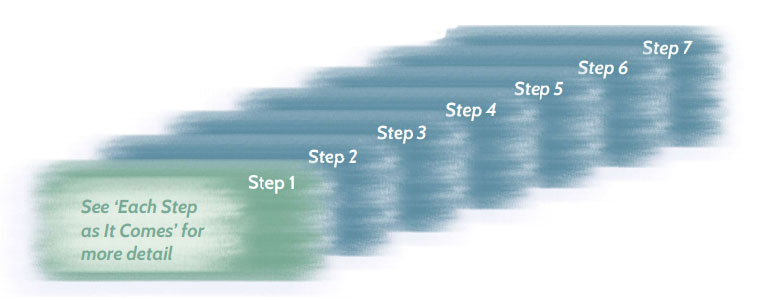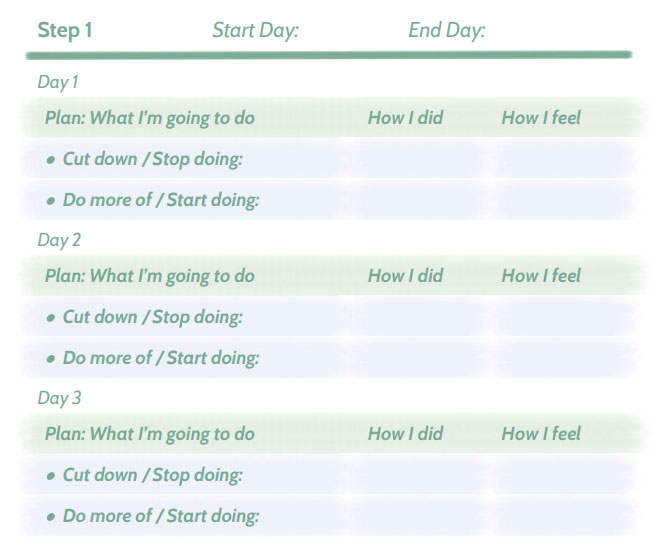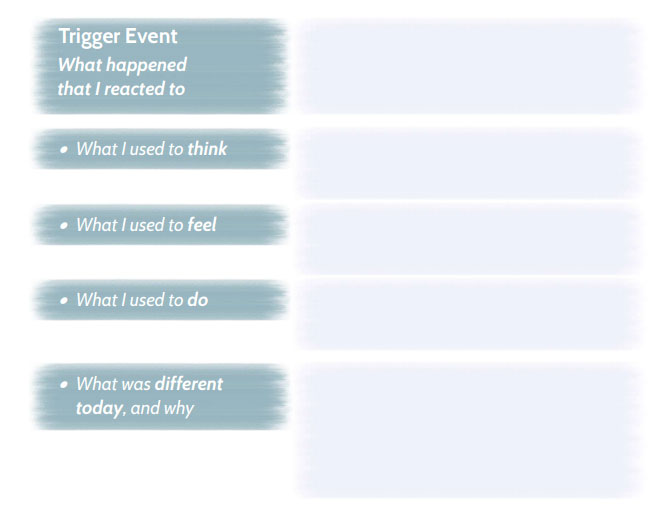
Breaking It Down into Achievable, Enjoyable Steps
Now you’re ready to look at the whole path you’re on, from the start somewhere in the lowlands to the finish up on a peak, and to break that path down into successively achievable steps.
- ThinkWell-LiveWell programmes are scheduled to run for a month, and we recommend that you think of up to seven steps lasting 3 days each (giving yourself room to relax, absorb, take time-outs, etc.).
- You can either work logically backwards from the last step (in order to have Y at the last step, you need to have achieved X the step before… and so on)….
- Or start with the very first, most obvious step you’re going to take – and build from there!
- It may take a little trial and error before you feel you’ve planned all your steps correctly – and then you may want to revisit and ‘tweak’ the steps as you learn more about your natural pace!
- If you’re trying to introduce a new habit or change an existing one, it may help to plan the things you’re going to do less or more of as the core of each step – but it’s up to you to find your own way!


Each Step as It Comes
Make each step on your path an enjoyable achievement that you will celebrate in its own right!
- Plan the main features of each day within the step.
- Record how you did in fact against the plan.
- Most importantly – keep a record of how that made you feel!
Adapt the wording below as you see fit. This is only an example; what matters is what works for you.


Thoughts & Responses
Most of us find that our behaviour, good and bad, can be dictated by our automatic response to things that happen to us or around us.
- Frequently, the same kind of ‘triggers’ cause the same sequence or ‘schema’ of thoughts, then feelings, then physical responses, then actions.
- You will find it interesting as you go through your steps to identify these recurring schemas and to observe the changes that emerge as the programme starts to have effect.

‘Nothing to download! Just add us to your home screen: Tap ![]() and then
and then ![]() Add to home screen.
Add to home screen.
Nothing to download! Just add us to your home screen.

 The first purpose of these exercises is to avoid the trap of thinking of the end outcome as too far away or unattainable – and to keep your inner self engaged and motivated by focusing on each step in turn.
The first purpose of these exercises is to avoid the trap of thinking of the end outcome as too far away or unattainable – and to keep your inner self engaged and motivated by focusing on each step in turn. The second purpose is to help you recognise unhelpful thoughts and to observe how your response to them, and then to the things that prompt them, start to change as your awareness changes.
The second purpose is to help you recognise unhelpful thoughts and to observe how your response to them, and then to the things that prompt them, start to change as your awareness changes. 